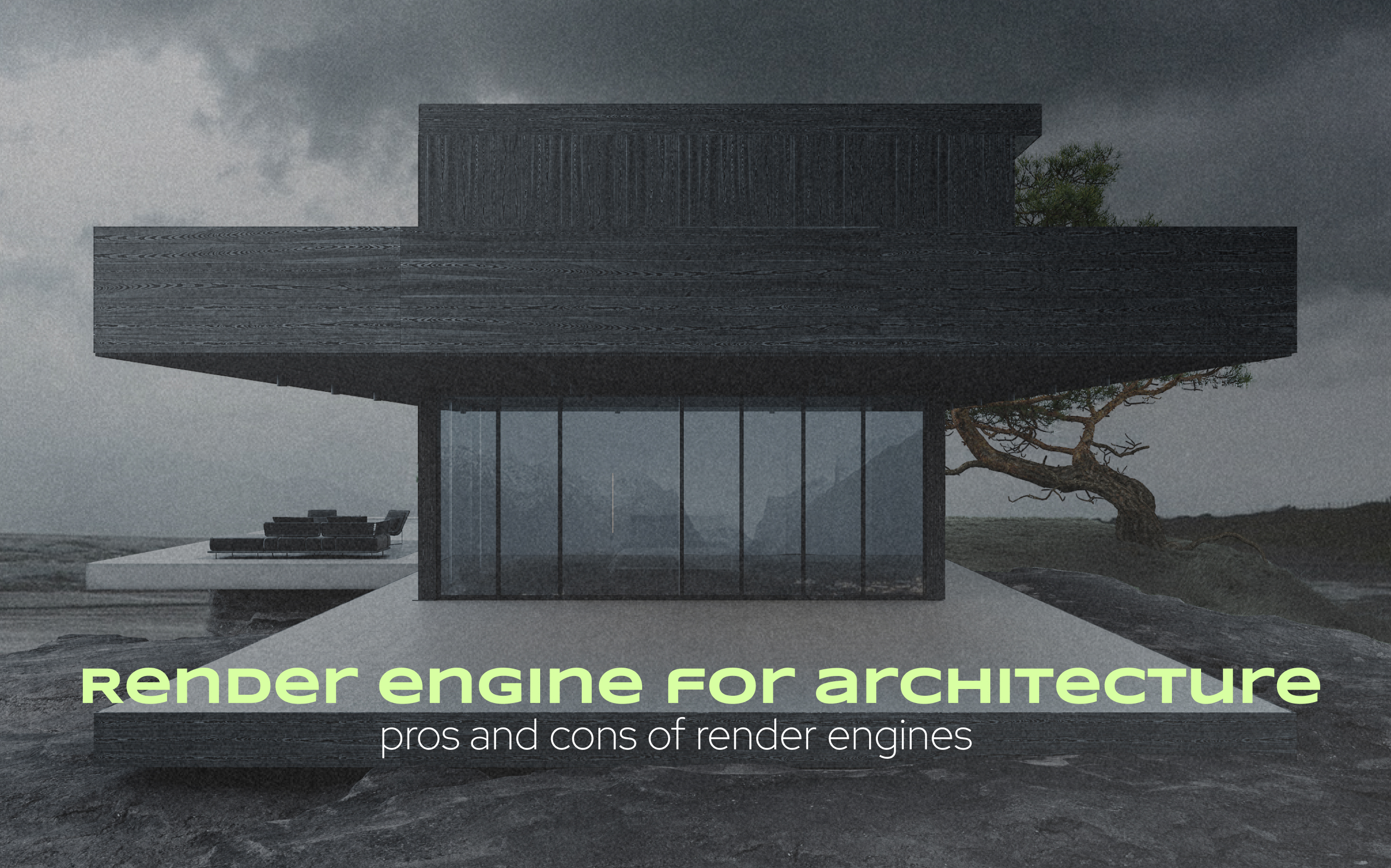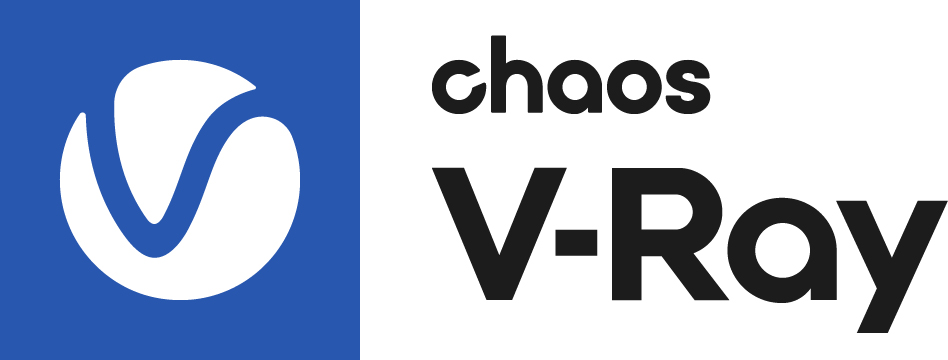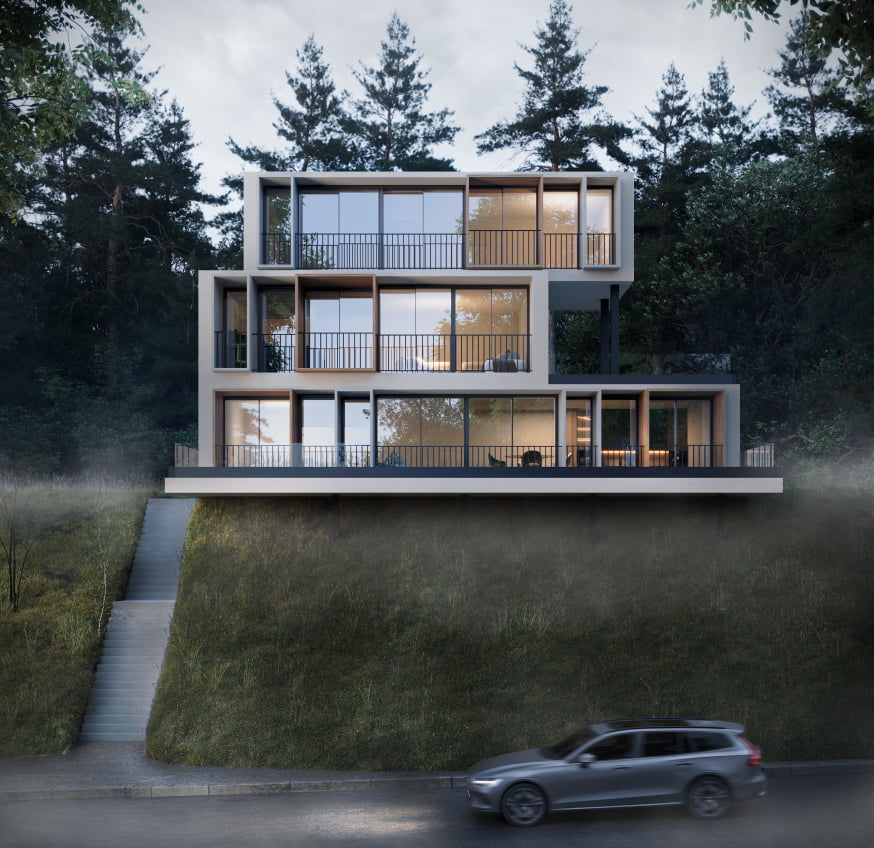Render engine for architecture – pros and cons of render engines


Interested in 3D visualizations for your project?
Just as homonyms should not be confused in language, it would also be incorrect to consider the concepts of 3D modeling and 3D visualization interchangeable. The choice of the program in which a 3D artist will work depends on their difference. This material will focus on the advantages and disadvantages of render engines software.
But first, the basics:
3D modeling describes the process of creating a volumetric three-dimensional figure, the result of which becomes, for example, CAD files.
With the help of 3D rendering, a digital image of an object is transformed into a realistic 2D picture, on which light, shadows, textures, and materials are calculated. It can be used in the future for advertising, as well as during the presentation of a client’s future villa in the Maldives.
Render engine V-rayRender engine V-ray

We owe the high-quality renders of skyscrapers or lonely houses in the forest to the creators of this multi-platform render engine. Its first beta version saw the world in 1997 thanks to the Bulgarian developer company Chaos Group. The software, which modestly hints at its superiority among similar ones in the niche and confirms this with figures on the official website – about 95 out of 100 major architectural companies worldwide choose V-ray to implement their projects.
Render engine makes life easier by solving its main task – it 100% conveys the quality of the texture of models under changing conditions, for example, the time of day. Whether the sun rises or sets, whether the lighting is natural or an incandescent lamp creates an “artificial” environment, the 3D scene must be depicted several times in different “roles” for detailed rendering in a static state. To achieve such realism, the software uses ray tracing methods (even algorithms for interacting with Progressive Path Tracing lighting), which support global illumination (both refraction, reflection, and shadow, as well as caustics, diffuse reflection). Projects in their infancy can undergo rapid iterations, allowing real-time adjustments – a huge advantage of the render engine.
Frequent updates to improve the program are an indicator of its scalability. In this regard, it is worth noting that before version 2.0, V-ray worked as a standalone module. Now it can also act as a plugin for programs like 3D Max (with which it is closely related), Maya, Cinema 4D, SketchUp.
Advantages of V-ray:
– rich set of tools and functionality;
– free collections of realistic materials (glass, plastic, etc.);
– a variety of settings for setting a “local” camera for a better angle;
– a large library of lighting scenarios;
– the presence of procedural maps that describe the properties of materials (from generating a marble pattern to creating a radial gradient);
– integration with 3Ds Max, Cinema 4D, Maya, Blender, SketchUp, Rhino;
– runs on Windows, Linux, and iOS;
– a library of educational materials for beginners.
Disadvantages of V-ray:
– difficulties in calculating lighting for moving objects;
– slow visualization of mirrored and transparent objects.
Corona Render engineCorona Render engine

Corona Render is the second solution from the Bulgarian company Chaos Group, which acquired the engine in 2017 (the project originally appeared in 2009 as an “invention” created by Czech developer Ondrej Karlik). With this render engine, there is no need to worry about the compatibility of created 3D figures with 3Ds Max, as it is integrated into the modeling program. It may not be accurate to call Corona Render the successor of V-ray, but it is clear that it is a worthy competitor that is constantly evolving. The latest updates in June are evidence of that.
Imagine being the winner in Jenga: holding your breath, you managed not to destroy the tower by rearranging the wooden blocks. Interactive rendering in Corona Render works similarly. With it, moving, positioning, and even changing the color of objects is possible without disrupting the overall “composition”. This means that the idyllic complexity of the ground texture will not be affected if you suddenly decide to add another fallen leaf to show the golden autumn more beautifully.
Through fire, water, and copper pipes – this can describe another interesting “innovation” related to the properties and position of the camera in the render engine. A perspective at eye level of a person swimming in a pool? Now renders with such “immersion” are possible. It is worth noting that the realism of water visualization has been greatly improved, and the enhanced caustics with the additional Fast Caustics Solver automatically calculates light and shadows.
Corona Render advantages:
– clear and simple interface, with accessible and universal settings;
– progressive rendering – the process of gradually improving the quality of rendering, which continues indefinitely until manually stopped;
– interactive rendering – the ability to change objects, materials, and object colors;
– multiple denoising options – transforms noisy images into “clean” ones;
– quality dof and motion blur effects;
– accessible scattering – a tool that allows realistic creation of vegetation, fur, wool, and hair.
Corona Render disadvantages:
– integration only with 3ds max and cinema 4d;
– absence of rendering on a graphics card.
Octane Render engineOctane Render engine

Any calculations of light scattering and absorption create a “cloudiness of solutions” that IT company Otoy introduced to the graphics and rendering market in 2009 (render engine was created by New Zealanders from Refractive Software LTD). Octane Render is known for its ability to solve tasks not only in the film industry but also in architecture.
The reference to creating “cloudiness” in Silicon Valley was mentioned in a joking manner at the very beginning for a reason. One of the leading tools in the software’s arsenal is volumetric rendering, which easily visualizes effects such as smoke, fog, fire, and clouds. High detail is achieved through the modeling of light, which “illuminates” the volumes of the figure. To further improve the function, the studio DreamWorks Animation “gifted” Octane Render a C++ open-source software library. This means that there is no need to worry about the leakage of large data of visual “phenomena” (including animations).
A stone covered in moss and a wooden table also shine, claim some graphics programmers. This means that all objects in the physical world are capable of reflecting light. Physically correct rendering is based on this idea, which is an essential part of Octane Render’s toolset.
Octane Render advantages:
– uses nvidia gpus with cuda technology;
– supports ray tracing technology;
– high compatibility – works with a variety of modeling programs (autodesk 3ds max, maya, cinema 4d, blender, and sketchup);
– ai-based scaling;
– uses deep learning for high-quality images;
– offers free demo versions and a version for working with blender;
– has its own tool for checking the engine’s compatibility with software.
Octane Render disadvantages:
– requires an expensive nvidia gpu, at least from the 8000 series;
– may experience crashes during operation.
Render engine LumionRender engine Lumion

Rendering at the speed of light describes this render engine, released in 2010. During its heyday, it was a real-time software primarily used in the gaming industry. Therefore, it is not surprising that its capabilities include creating realistic panoramas, videos, animations, and products for VR paired with augmented reality.
Later, the engine found its place in architectural visualization. It could be said that it “sold” its soul for the ability to instantly view future exterior visualizations in exchange for their somewhat conditional realism. Everywhere has its trade-offs. In general, such behavior is typical for programs working in real-time.
Lumion advantages:
– intuitive interface with prompts, reminiscent of a game walkthrough;
– internal documentation for working with the engine;
– optimization of visualization quality during editing;
– high rendering speed;
– rich collection of presets – easily adjust effects such as fog, sun, and rain.
Lumion disadvantages:
– lack of detailed rendering in final images;
– high hardware requirements.
Render engine RedshiftRender engine Redshift
![]()
Overload can happen not only to an ordinary person on a Monday, but also to the “brain centers” (processor cores) when the render engine is working at its limit. For example, the Redshift GPU can be evaluated using the Cinebench benchmark, which is expected to be released next year. Its integration will be handled by the company Maxon.
Maxon also became the purchaser of Redshift, which first appeared in 2015. The render is considered customizable, using only the resources of the graphics processor. Some features of Cinema 4D’s functionality can be seen in the render engine (for example, node-based systems in materials), which is not surprising, as it is the flagship of Maxon for creating 3D graphics. Fans of Redshift were not disappointed by the lack of a total merger.
Redshift advantages:
– supports any global illumination calculation technology.
Redshift disadvantages:
– weak optimization for parallel calculation – having more graphics cards will not increase rendering speed.
Render engine Arnold AutodeskRender engine Arnold Autodesk

The render engine’s name is quite ironic, thanks to its main architect Marcos Fajardo. Arnold Autodesk is considered the main tool for creating high-quality products by many visualization studios (over 300 worldwide). For example, it played a role in creating “wow effects” in films of the “Star Wars” saga, with the help of the company Industrial Light & Magic. The first version of the render engine was released in 1997. The idea for its creation was inherited by the company Solid Angle, which was later acquired by Autodesk. The main feature of the software is the use of the Monte Carlo ray tracing method, allowing for changes to be made to the render in real-time.
Today, the engine is available as an integrated render for Maya and 3Ds Max. It can also act as a standalone tool, supporting modules for Maya, 3Ds Max, Houdini, Cinema 4D, and Katana. The system requirements are flexible, as it runs on Linux, Windows, and Mac OS X.
Arnold Autodesk advantages:
– shaders have dual reflections and allow light to pass through – great for creating realistic hair, fur, skin, etc.;
– volumetric rendering;
– easy render setup;
– render passes – the result of visualization is separate material properties;
– easy integration with third-party applications;
– duplicate work – creates multiple primitives for realism, such as plants;
– high data optimization, which requires less memory for rendering.
Arnold Autodesk disadvantages:
– not very suitable for interior visualization;
– slow visualization of transparent objects.
SHARE THIS...

Transform Your Vision with Our 3D Visualization Expertise
Our other articles
Get in touch
The art of 3D visualization is our passion. We specialize in a wide range of services to bring
your ideas to life. In our arsenal, we have architectural rendering, interior visualization, 3D product visualization, 360-degree panoramas, virtual reality (VR), architectural animation, rendering
for metaverses, and many other capabilities.
If you’re looking to elevate your business with stunning visualizations, simply fill out the form below. Our team will get in touch with you shortly to kickstart work on your project. Let’s collaborate to create visualizations that will amaze your clients and help you achieve your goals.
Contact us







